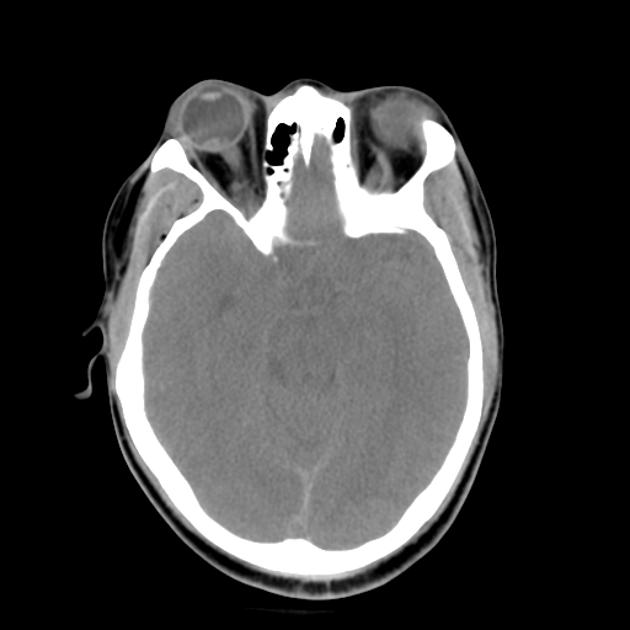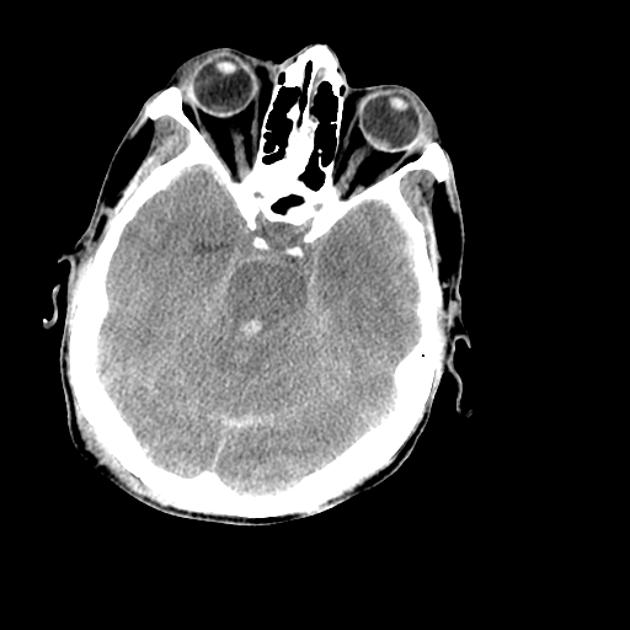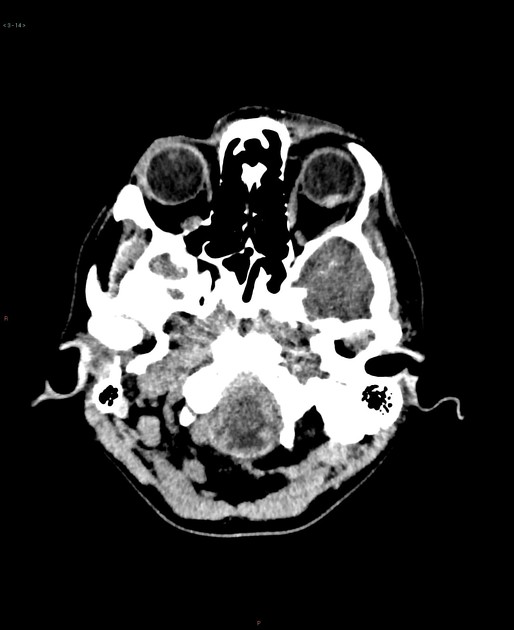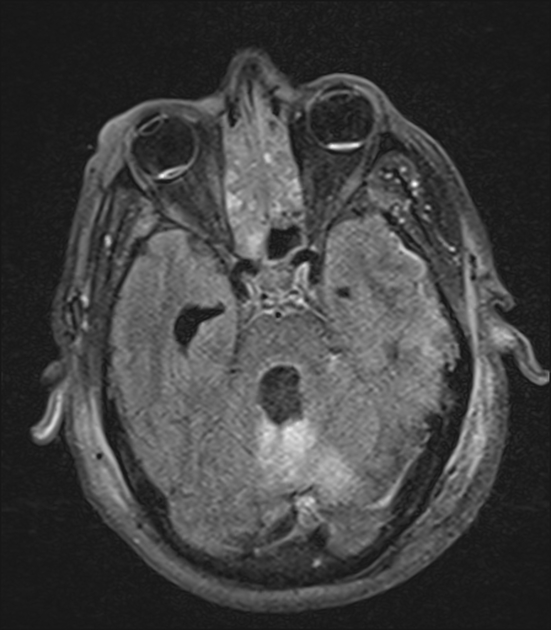Glaskörperblutung bei Subarachnoidalblutung




Terson syndrome refers to vitreous hemorrhage associated with subarachnoid hemorrhage, however, some authors include retinal hemorrhage as well. The syndrome is a poor prognostic marker in patients with subarachnoid hemorrhage.
Epidemiology
Terson syndrome has been reported to occur in 13-50% of patients with subarachnoid hemorrhage .
Clinical features
In addition to clinical features of severe subarachnoid hemorrhage, such as headache and coma, patients present with varying degrees of vision loss . Fundoscopic examination is diagnostic, with patients having evidence of vitreous hemorrhage (and perhaps other intraocular hemorrhage) .
These clinical features usually manifest within the first hour of subarachnoid hemorrhage, but can also be delayed by days, and even weeks, after subarachnoid hemorrhage .
Pathology
Severe subarachnoid hemorrhage, as demonstrated by a low Glasgow coma scale, a high Hunt and Hess grade, and/or a high Fisher grade, have been found to be associated with a higher incidence of Terson syndrome .
In this setting, intraocular hemorrhage is thought to be a consequence of a sudden increase in intracranial pressure causing obstruction of the central retinal vein as well as retinal venous stasis, which in turn results in vitreous and intraretinal hemorrhages .
A similar syndrome has been reported to occur with subdural hematomas, epidural hematomas, and traumatic brain injury, all cases postulated to be also due to increased intracranial pressure . Some authors also term these similar presentations under the banner of Terson syndrome .
Radiographic features
Ultrasound
The red blood cells sediment and compact near the posterior hyaloid surface of detached vitreous and scanning shows echoes of increasing density in the posterior gel. Degenerating blood cells give rise to lower density echoes and color the posterior vitreous known as Ocher membrane. Subvitreal hemorrhage may sediment to form a fluid level behind the collapsing gel.
CT
On CT evaluation, retinal nodularity and crescentic hyperdensity, relative to the vitreous humor, in the posterior globe in association with subarachnoid hemorrhage are highly suggestive of this diagnosis .
Treatment and prognosis
Although spontaneous regression of the hemorrhage is seen in up to half of all patients, the condition may require operative intervention with vitrectomy, particularly in the setting of bilateral vitreous hemorrhages . The neurological outcome and overall prognosis is worse in subarachnoid hemorrhage patients with Terson syndrome, compared to those without .
History and etymology
Although the condition is named after Albert Terson (1867-1935), a French ophthalmologist, who described it in 1900 , the first case was actually described a few years earlier in 1881 by Moritz Litten (1845-1907), a German physician .
Siehe auch:
und weiter:

 Assoziationen und Differentialdiagnosen zu Glaskörperblutung bei Subarachnoidalblutung:
Assoziationen und Differentialdiagnosen zu Glaskörperblutung bei Subarachnoidalblutung:

